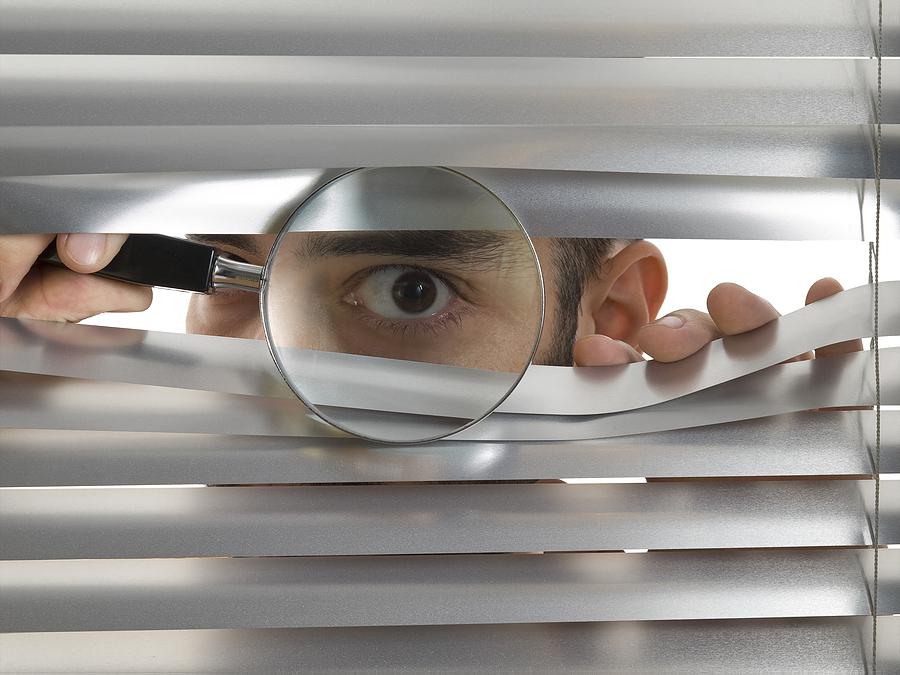Voyeurism is the sexual interest that one has towards people engaged in intimate behaviours. It can be also defined as the habit of spying on people doing actions that are usually considered to be of a private nature, such as engaging in sexual activity or undressing. In voyeurism, the person who is being observed may not be related in any way with the voyeur. This sort of obsessive behaviour can also be termed as stalking. Voyeurism may include secretly taking photographs, or videos, or observing through a two-way mirror.

History
The term has its roots in French. The word ‘Voyeur’ in French means “the one who looks”. Commonly, a male voyeur is called a “Peeping Tom” which comes from the legend of Lady Godiva. This term, however, applies to a male peeping through the window.
Voyeurism is mentioned in the Bible; it is not something new. The concept of Voyeurism has changed over time. In today’s culture, non-pornographic reality television shows, for example, “The Real World” and “Survivor” are associated voyeurism. Here, the television viewers are allowed to view intimate interactions with a group of people or a certain single subject. Even though it is different from the original definition of Voyeurism, the concept is more or less the same. The subjects here are aware of their audiences, but the show is unscripted and maintains a level of sexual implications.

Historical Perspectives
A little research has been done on Voyeurism. Historically, the term was used to describe individuals who fall within the Diagnostic and Statistical Manual or the DSM descriptions. Nevertheless, the term voyeur is socially accepted to be an individual who spies on intimate lives of others, which might exclude sexual content. Therefore, reality television shows which allow viewing personal lives of others can be linked to voyeurism. This differs from the historical definitions, which describes a specific individual. The modern version vaguely describes the general population.

Prevalence
The prevalence of voyeurism is high in most populations. Initially, it was thought to have been confined to a small section of the population, but this view of voyeurism changed when it was discovered by Alfred Kinsley, an American biologist and sexologist, that over thirty percent of men prefer having coitus with the lights on. Later, more research has shown that sixty-five percent of men has engaged in spying, which suggests that such behaviour is widely spread. Forty-two percent of men have attempted voyeurism and almost fifty-four percent have voyeuristic fantasies. In a study in Sweden, it was shown that over seven percent of both men and women have engaged in voyeurism.
Techniques
There are numerous ways in which a voyeur can observe an individual without the knowledge of that person. There are several devices and strategies that include hidden cameras, two-way mirrors, pee holes, and secret photography. Secret photography might be done with normal cameras but with the photographer hidden. A photographer can also use a telephoto lens from a distance to do the same job. Modern day, digital cameras are small enough and packs enough pixels to give high-resolution photos and videos while being used from a concealed position.

Characteristics
As voyeurism is prevalent in the society, the people engaging in voyeuristic actions have diverse behaviours. However, the characteristics discussed are applicable to only those who come under the definition of the Diagnostic and Statistical Manual.
- Voyeurs comparatively possess higher mental health that individuals with paraphilia.
- Voyeurs do not tend to incline towards drugs and alcohol.
- They also have higher sexual interest.
- The number of sexual partners per subject is high.
- They also tend to have a same-sex partner.
- Voyeurs usually have had sexual intercourse at a much later age.
- There is not much difference in the sexual history of non-voyeurs and voyeurs.
- Voyeurism is more prevalent in men than in women. However, researchers show that both men and women report the almost same amount of likelihood that the will hypothetically take up voyeurism.
Current perspectives
Current perceptions of voyeurism are from a medical and biological point of view. Newer theories suggest that voyeurisms have its own share of advantages.
- Looking at the naked form gives biological information, such as genetic suitability, health, and mating potential. The naked form of the female allows observing details about age, symmetry, the waist to hip ratio, which are all related to the production of healthy offsprings.
- Lovemap theory says that voyeurism exists because looking at a nude figure shifts complimentary sexual desires towards primary means of sexual satisfaction.
- Voyeurism has also been linked to obsessive-compulsive disorder (OCD). When treated for OCD, such tendencies decrease.
Conclusion
Voyeurism can be treated in a lot of ways. Most of them include group psychotherapy, shock aversion and psychoanalytic. They show success with limitations. Drugs like anti-depressants and anti-psychotics can be used to treat voyeurism. Pornography can be used to treat voyeurism too. Pornography reduces the voyeuristic desires without breaking the law. In many countries, voyeurism is considered as a sexual offence, which can lead to fine and imprisonment. In popular culture, voyeurism has been used as the plot for movies like ‘Disturbia’ and ‘Blue Velvet’.







